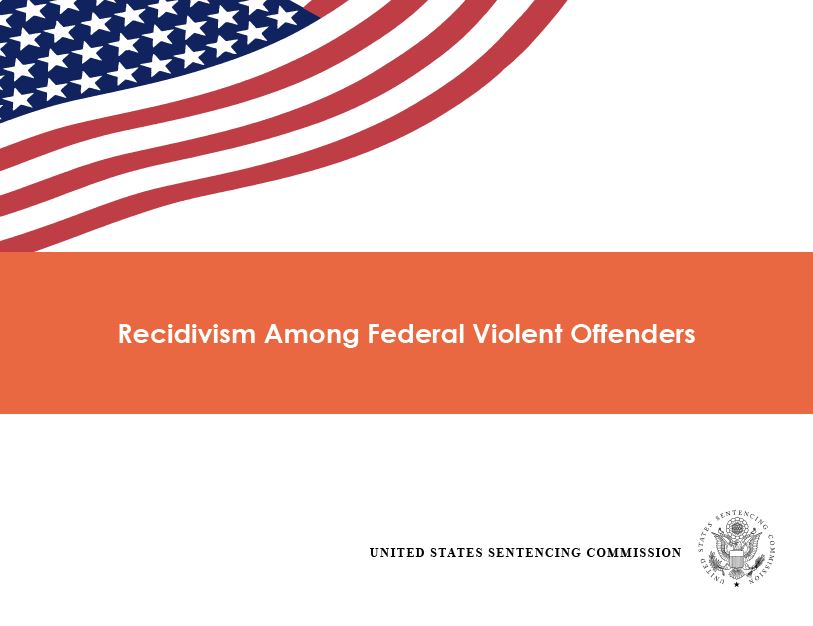Report Summary

- "Violent instant offenders" who engaged in violent criminal conduct as part of their instant federal offense; and
- "Violent prior offenders" who were not categorized as violent offenders based on their instant federal offense, but who had been arrested for a violent offense in their past.
Taken together, these 10,004 “violent offenders” are analyzed in comparison to the remaining 15,427 “non-violent offenders” released from federal custody in calendar year 2005. (Published January 24, 2019)
Key Findings
Consistent with the Commission’s previous research, this report shows that offenders who engaged in violent criminal activity—whether during the instant federal offense or as part of prior criminal conduct—generally recidivated at a higher rate, more quickly, and for more serious crimes than non-violent offenders.
Key findings of the Commission’s study of recidivism among violent offenders are:
- A substantial number of the 25,431 U.S. offenders released in calendar year 2005—39.3 percent—engaged in violent criminal activity as part of their instant federal offense or prior criminal conduct.
- Violent offenders recidivated at a higher rate than non-violent offenders. Over 60 percent (63.8%) of violent offenders recidivated by being rearrested for a new crime or for a violation of supervision conditions. This compares to less than 40 percent (39.8%) of non-violent offenders who were rearrested during the follow-up period.
- Violent offenders recidivated more quickly than non-violent offenders. Of those violent offenders who recidivated, the median time from release to the first recidivism event was 18 months. Comparatively, the median time from release to the first recidivism event for non-violent offenders was 24 months.
- Violent offenders recidivated for more serious crimes than non-violent offenders. Over one-fourth (28.4%) of the violent offenders who recidivated had assault as their most serious new charge, followed by public order crimes (15.6%) and drug trafficking (11.1%). Of the non-violent offenders who recidivated, public order crimes were the most common new charge (20.9%), followed by assault (17.9%) and drug trafficking (12.0%).
- Violent offenders have higher recidivism rates than non-violent offenders in every Criminal History Category, however, the difference in recidivism rates between violent and non-violent offenders is most pronounced in the lower Criminal History Categories and among offenders designated as career offenders or armed career criminals.
- Recidivism rates for violent offenders in every age group at the time of release from custody were higher than the rates for non-violent offenders. Violent offenders recidivated at twice the rate of non-violent offenders among those released after age 40.
- Analyzed separately, violent instant offenders and violent prior offenders both recidivated at a higher rate and for more serious crimes than non-violent offenders.
